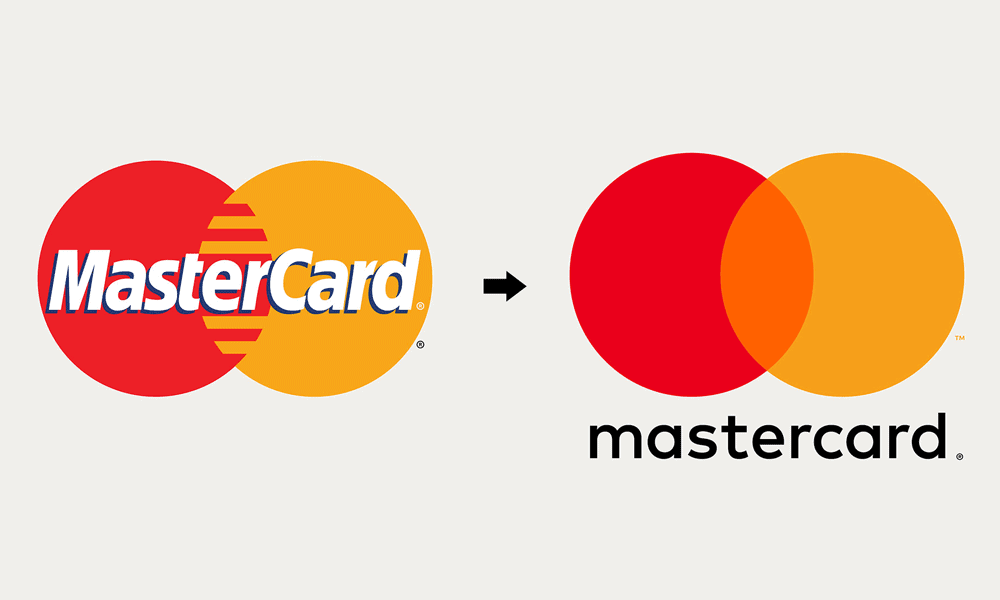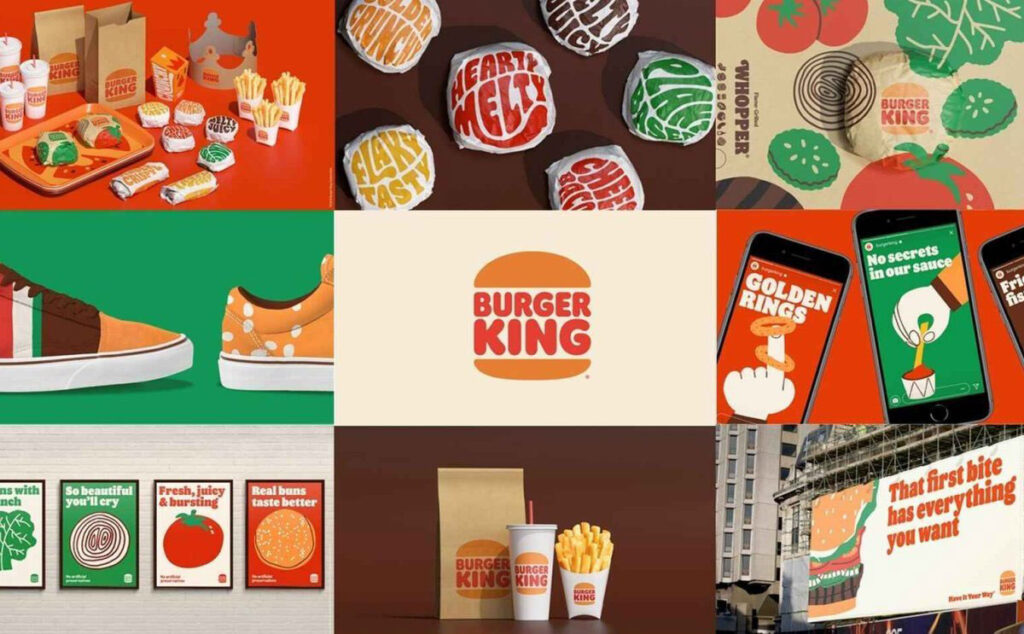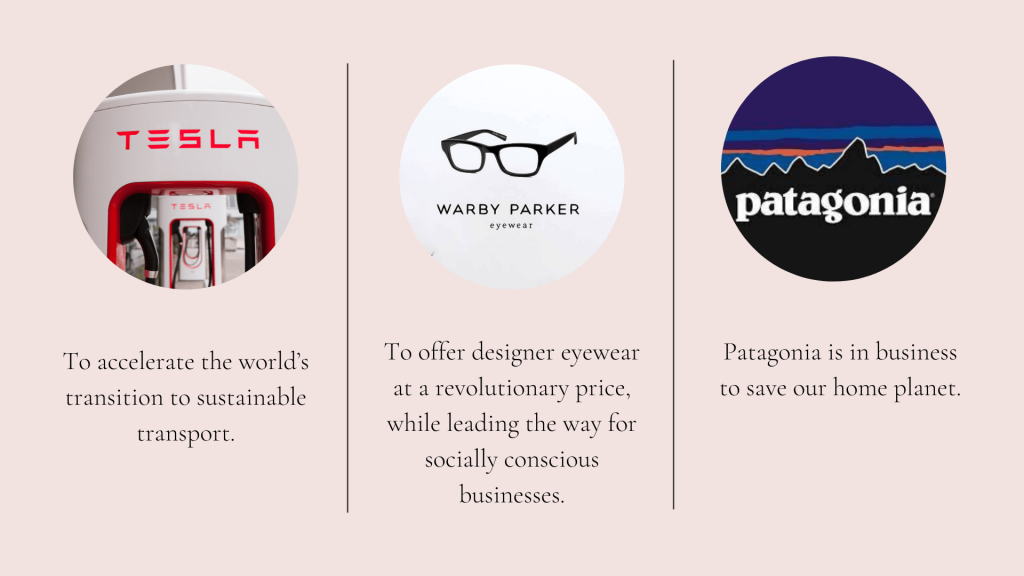Company Rebranding: How To Create A Winning Strategy
The key to successful company rebranding is to focus on branding from the bottom up. Start with the basics, the product itself. Then work on your brand positioning. This is followed by marketing and distribution strategies, and finally, the branding strategy for the entire company.
So… you're a small business owner or entrepreneur looking to rebrand your company's image. You've thought long and hard about what you're trying to achieve and have a great strategy. But now comes the complicated part: putting the strategy into practice.
After all, hundreds, thousands, or even millions of other small businesses are doing the same thing as you. How do you make sure that you're not going to end up doing more harm than good?
For any business, rebranding is a big deal. It is a chance to transform your company image and help create a brand identity that attracts new customers and keeps existing ones happy. It is an opportunity to tell your story and highlight your strengths. But it's not just about your products and services. It's about how you communicate with your customers.
The majority of companies are doing it wrong.
If you're not sure what you need to do, here's a quick guide to help you create a winning strategy.
Table of Contents
Why Do Companies Rebrand?

Brands and their products are constantly changing. That's why they rebrand. Sometimes, it's to make a product look different. Sometimes, it's to change the name. Sometimes, it's to add new technology.
In the world of brands, you have to change what you stand for to succeed. It's like a marriage. It's like a relationship. It's like being a parent. Change is inevitable. So, too, must the brand.
If you're a brand that's been around a while, there's no need to worry. You're going to stay around. But to get bigger, you must let go of something.
Think about what you can drop, and be prepared to drop it. What things have you tried? What hasn't worked? Which things have you taken for granted? Which things have you invested in? If you haven't invested in those things, maybe you need to take a step back and ensure that your brand is built on those things that matter to you.
Your Brand Is Your Identity
You need your brand to represent you, your company, your products, your services, and everything else. Without your brand, you're just a person. People who know nothing about you can't judge your brand.
But, once you decide what your brand represents, how you should communicate it, and why it matters to your customers, you need to stick with it. Changing your brand is like getting married or getting divorced. You have to have some sort of reason for it.
Many companies think they'll grow if they do something different. That's not how it works. If your brand is a bit dated, you'll never grow. If your brand is old-fashioned, people won't understand what you're trying to say.
But if your brand is built around the correct values, it's a great place to start.
Your Brand Is What You Represent
Your brand's identity is what you represent. It's your brand's values. Your brand's identity includes your goals. You may have a goal to be profitable, expand, educate, or inspire. Whatever your goal, you must be willing to walk away from that goal.
If you're doing something that isn't working for your brand, you must be ready to change.
The Question to Ask Yourself
- Can I keep going the same way?
- Can my current approach serve me in the future?
- Will this work to keep me in the game?
- Hardcover Book
- Wheeler, Alina (Author)
- English (Publication Language)
- 352 Pages – 03/06/2024 (Publication Date) – Wiley (Publisher)
How You Communicate
It's essential to make sure your brand is represented correctly. You're communicating your brand, which means you must be able to explain your brand to anyone.
You have to be able to define your brand so that your potential customers can identify your brand when they hear it.
Your brand's identity is your brand's message, but it's also how your brand gets across that message. Your brand's identity is what your brand looks like.
Your brand's identity is visual. It's the style. It's the colour palette. It's the fonts. It's the logo. It's the brand colours. It's everything.
Why Your Brand Matters
Without a strong brand, you're just a person. You're just a business. You don't have any value. And, without a strong brand, your customers don't trust you. They think that you're not trustworthy.
Without a strong brand, your customers can't connect with you. They can't see who you are. Without a strong brand, you can't communicate. You can't explain yourself. You can't communicate your vision. You can't show what you're capable of.
And, without a strong brand, you can't get where you want to go.
Types of Company Rebranding

Rebranding is a type of communication that involves redesigning a company's visual identity, voice, and other components.
Rebranding is a form of company communication that requires internal or external consultation before it begins. The goal is to develop a strategy that allows a company to tell its story clearly and concisely.
There are several different ways to rebrand a company. Some rebrands involve creating a new logo or a new company name. Others involve changing how the company communicates internally, such as through internal marketing campaigns.
Regardless of the rebranding method chosen, rebranding should be strategic and well thought out. If you aren't sure how to plan a successful rebranding, it may be a good idea to work with an outside consultant who can help you create a plan that's going to be successful.
Four types of rebranding often coincide. They include:
- Company Name Change
- Visual Identity Change
- Internal Marketing Campaign
- External Promotional Campaign
There are many reasons why companies decide to rebrand. Some rebranding activities are done because they want to emphasise a new product, service, or idea. Other rebrands are done to communicate a message more clearly or effectively.
Here are some examples of different types of rebranding.
Company Name Change
A common reason for rebranding is to change the company's name. This rebranding may involve changing the name of a company, a division, or even the name of a product. When a company's name changes, the name of the company's products will also change.
For example, General Motors decided to change the name of its Saturn division from the Saturn Division to GMC. As a result, the name of GM's new brand of trucks was also changed from the Chevrolet line to the GMC line.
Sometimes, a company will change the name of a product to make it more recognisable, such as changing the name of a popular consumer product to something more unique.
Examples of companies that have changed their names are:
- Facebook → Meta
- Google → Alphabet
- Cadabra → Amazon
- Pete's Super Submarines → Subway
- Datsun → Nissan
When a company's name is changed, its employees may need to update any documents or information that refer to the old name. Companies also may need to update their business cards, brochures, and advertisements if their name is changed.
In addition, the company's social media profiles, including Facebook, Twitter, and LinkedIn, may need to be updated to reflect the new name.
- Killian, Bob (Author)
- English (Publication Language)
- 112 Pages – 03/13/2020 (Publication Date) – Independently published (Publisher)
Visual Identity Change
Another common reason for a company to rebrand is to change the way the company looks. Rebranding a company's visual identity means designing a new logo, brand colours, and other visual elements.
For example, Google created a new visual identity for its search engine, replacing the iconic blue logo that it had used for more than ten years.
The new logo is a colourful, geometric pattern representing the company's mission of organising the world's information.
Companies may use a single brand colour or several colours in their logo. For example, Amazon uses a single yellow colour for its logo.
Some companies use a single colour in their logo and brand colours to help create a consistent visual appearance across the entire company. For example, Apple uses a crisp grey palette in its logo and logomark on the back of every iPhone.
Other companies use a few colours in their logos, which are applied differently to represent different products. For example, the logo for Starbucks contains green, brown, and white in different proportions.
Changing a company's visual identity can be a very effective way to make a solid first impression.
Internal Marketing Campaign
Another reason a company should rebrand is to improve its internal marketing efforts. Companies can use a rebranding campaign to boost sales and promote a new product or service.
To improve the effectiveness of an internal marketing campaign, it's crucial to align the branding with the company's goals and strategy.
A company's goal may be to increase awareness of a new product or service. If that is the case, the company should use a visual identity that emphasises the features of the new product or service.
Why Choose A Rebranding Strategy?

Rebranding helps you build brand awareness and loyalty, which leads to increased sales and profitability.
According to BDC, the average company spends less than five per cent of its annual revenue on marketing. That's $100,000 per year—and it will only get higher. In today's competitive marketplace, customers are less likely to buy from businesses that aren't well-known.
Many businesses have outgrown their current brand identity. You might think of a more comprehensive business name, new products or services, or maybe even a new location. But it doesn't matter why you want to rebrand.
Start with the question, “What does my brand say about me and my business?” It's a difficult question to answer because the brand is an amalgamation of many factors, but that doesn't mean you can't start the process. If you're thinking about a name change or a rebrand, begin by conducting an in-depth review of your brand and make sure your brand isn't telling a lie.
How Can I Start a Rebranding Project?
First, determine whether your business is ready for a rebranding project. Are there new opportunities you want to explore? Do your current customers love your brand, but you're not getting as much traffic as you want? If so, it's time to rebrand.
There are two ways to start your rebranding:
- Make a list of everything you're trying to change.
- Create a brand strategy map.
You'll need to decide which is the best approach for your business.
Make a List
You can use this method to analyse any part of your business, including your products or services, physical location, brand, or name.
Start by gathering as much information as you can. Write down your business's mission statement, tagline, or vision.
- What are your core values?
- What are your brand promises?
Then, think about your target audience and customer base.
- What do they want from your business?
- How will your business stand out from competitors?
- Who founded it?
- Where did it start?
- When did it begin?
These are all questions to consider.
Next, write down any words or phrases that come to mind when you think of your business. Think of what it would take to get to your goal—what is the one thing people need to know about you?
Finally, write down any adjectives that describe your business. Use these to make a short list of words and phrases representing your business. For example, if your business sells software, your adjectives could include:
- Professional
- Reliable
- Customisable
- Comprehensive
Once you have this list, look for similarities in your adjectives. For example, if the word “professional” appears twice, it may be a good indicator that your business is missing something.
To create your brand vision, you can start putting these words and phrases together.
Create a Brand Strategy Map
Another way to start your rebranding project is to draw a brand strategy map. This method helps you visualise your goals and shows how you plan to achieve them.
A brand strategy map is a tool that helps you determine what you want from your rebranding. The map should include all of your answers to the questions we asked at the beginning of this article.
Draw a circle on the page and label it with the name of your business. Then, inside the circle, list your brand promise. Your brand promise combines your brand message and your brand promise.
List the attributes of your business. What are the characteristics that make your business unique? The more attributes you can include, the better.
Then, write your brand vision or what you want your business to look like. This should be a clear and concise description of what your business will look like.
Finally, outline the plan for accomplishing your vision. Will your business remain the same? If so, what changes do you need to make? What does the result look like?
You'll have a brand strategy map representing your business vision when you're done. The next step is sharing it with your team and getting feedback.
The Benefits Of Rebranding

While it's true that the company may feel that they have more control over their brand name, in reality, their customers often have a stronger sense of ownership of their favourite brands. So how does this work?
The best way to start is by creating the most positive brand experience for your customers. When customers associate your brand with positive feelings, it's much easier to maintain brand loyalty. For example, suppose a customer buys from your brand because of its superior service. In that case, they may continue buying from your brand even if they receive a cheaper offer from another provider.
In other words, you want to create a brand experience that your customers would love to share with their friends and family.
The best way to do this is by rebranding your company to match your company values. If your brand was once known for being innovative and cutting-edge, why not update the name to reflect your current values? Instead of looking for the most popular or “original” name, why not ask your customers what they think your brand stands for?
When rebranding, it's crucial to consider the emotional connection with your customers. Think about what is meaningful to them – what makes them happy, sad, angry, excited, etc. – and create a name that reflects that.
It's also essential to make sure your new name will stick. Do you want to give away your brand to anyone else? Or is it better to create a powerful and memorable brand that doesn't need to be shared?
When you hire an agency, you have more control over your brand. The agency represents your brand in the marketplace by building a portfolio of clients and providing various services that help your brand stand out in the market.
Since an agency specialises in marketing, it can offer more diverse services than a marketing firm. For example, an agency can develop a marketing strategy for your brand that may include traditional advertising, direct response, eCommerce, and affiliate marketing.
How To Make A Strong Brand

The rebranding process can be daunting, especially if you're unsure where to start. The steps required to rebrand a business include successfully:
- A well-designed logo
- Great website
- Brand guidelines
- Clear vision
In this post, we'll explain the three main steps that need to be taken to ensure your branding is vital.
A well-designed logo
Every company needs a logo. This is an essential part of branding — if your logo isn't appealing, you'll have difficulty convincing people that your company is worth their time.
Here are three things to look out for when considering a logo design:
Symbolism
Logos should evoke an emotional response. This could mean your brand should be a smile, a heart, or a lightning bolt.
Logos should be memorable. You want something that will stick in the mind of your consumers long after they've bought your product.
Logos should reflect your company culture. When consumers see the logo, they should immediately understand what your company is all about.
If your logo doesn't meet these criteria, you'll need to find another designer.
Website Design
Creating a website that matches your branding guidelines is integral to rebranding. It's the first impression your customers will get when they visit your website, so your website must have an aesthetic that reflects your brand identity.
While creating a website is easy, it can be challenging to create one that perfectly matches your company's values, mission, and goals. If your website is too plain, it might send your audience the opposite message.
For example, if you're a personal finance website, don't display a person's face in your logo or website photos. That would be distracting and could send the wrong message to your customers.
Instead, use the same typeface for your logo and website. This way, your customers will know exactly what your company is about.
Brand Guidelines
Your brand should have clear guidelines on how your products and services are represented online and in print.
For example, if you're a financial company, ensure your logo and website don't contain any imagery of a person or human being. This could confuse your customers, making them think you're a loan broker instead of a financial firm.
When creating your brand guidelines, make sure to incorporate the following:
- Your mission statement.
- Your brand promise.
- The fundamental values that represent your brand.
- An overview of your product or service.
A great logo is essential to a successful rebrand, but it's only half the battle. You also need to create a website that represents your company well. This way, customers can easily find your brand online.
How To Use A Brand To Sell Products

Rebranding isn't about spending more money or even using a bigger budget. It's about doing things differently. You'll find that rebranding can attract customers and engage them. Rebranding is all about thinking in a new way and being original.
There are many ways to do it. You can use the same logo but change the fonts and colours. Or you can change the fonts and colours but keep the logo the same. Or you can change everything.
When you rebrand, you need to be able to think outside the box. If you're unsure where to start, you can start with the basics. For example, if you're changing the fonts and colours, then focus on the overall look and feel.
The goal is to create a brand that your customers will associate with you. It should reflect your personality and your brand story.
You can start by deciding what kind of product or service you'd like to sell. For example, are you a brand for people with kids? Or a brand that sells for dogs? Do you want to be a brand for business people?
Once you decide the category you will rebrand for; you can brainstorm ideas. Write down as many ideas as you can. You might write: “fun”, “health”, “wellness”, “clean”, “natural”, “environmental”, etc.
After you have a list of potential categories, you can narrow it down. For example, if you're going to sell dog toys, you could come up with: “dog toys for puppies”, “dog toys for small dogs”, “dog toys for teething”, etc.
You can also brainstorm possible keywords that people would search to find what they're looking for. For example, you could brainstorm words like “dog toys”, “pet toys”, “best toys for dogs”, etc.
Next, you can think about how you'd like to present yourself. For example, would you like to use a cartoon dog? A picture of a dog? A photo of a puppy? What colours and fonts do you like?
You can create your website or use a template. You can also use social media like Facebook or Instagram. If you're on social media, ask your followers and friends what images they like. They may have some good ideas for you.
What you end up with is a brand that you feel good about. That's the most crucial part of the rebranding.
You may want to make your brand your signature. This means that you will use the same style and colour for every piece of writing, whether it's your email signature, your social media handle, or even the font you use on your product packaging.
If you're selling various products, you can have multiple logos that all look the same. For example, if you sell dog food, you can have a dog food logo, a pet food logo, a dog toy logo, and a cat toy logo. You could use the same fonts and colours in each of them.
When you use the same fonts and colours, it makes your brand more uniform. People will get used to a particular style and feel comfortable with your brand. This will help you establish a better connection with your customers.
For example, if you want to start selling dog food and have a line of toys, it will be more difficult to attract buyers if you only use the toy logo. People need to see the logo that represents the company.
You may think your customers won't recognise your logo when changing it. But you're wrong. If you use the same colours, fonts, and layout, likely, your customers will still remember your brand.
How Long Does it Take to Rebrand?
It varies. You can do it in a few days, months, or even a year or more. The more time you spend rebranding, the more you can learn.
When you start your rebranding process, you'll probably feel overwhelmed. Don't worry. You don't need to spend a lot of time or money.
However, you may need a little help to get started. If so, you can work with a branding expert or hire a freelancer.
Conclusion
When starting a business, there are many things to consider, like branding, design, social media, and more.
But one thing that's often overlooked is the company name. Your company name is the face of your business, and its reputation will reflect your company's overall brand.
Since the name is so important, it's a good idea to consider it. Your chosen name should reflect your company's vision, values, and personality.
And while there are many ways to create a winning strategy, I recommend starting by considering your target audience and their needs. Once you understand those, you'll be able to develop a strategy that aligns with your audience's desires.
Want to learn more about company rebranding? Check out this guide about how to name your company!
Last update on 2024-06-06 / Affiliate links / Images from Amazon Product Advertising API


